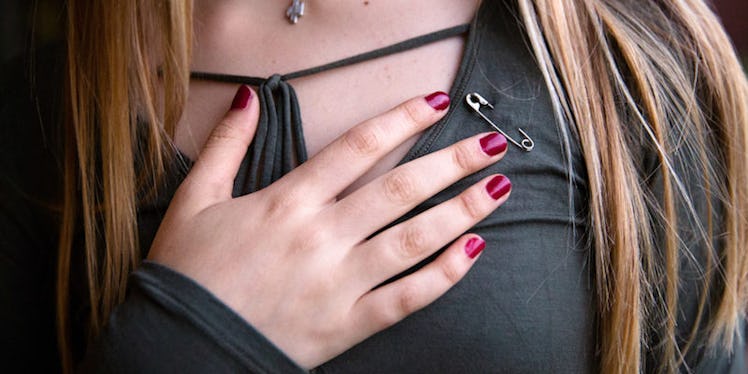
Everything You Need To Consider Before Wearing A Safety Pin As An Ally
Many Americans are pinning on a safety pin after this election.
This simple object has quickly emerged as a sign that the wearer is willing to offer a safe space for groups marginalized by the rhetoric of Donald Trump and suffering from a sharp spike in hate crimes after the election.
Yet, there are a few hidden dangers in wearing safety pins.
Here are the four questions you need to ask before wearing a safety pin to help you avoid these dangers.
What Are Your Motivations and Goals?
Many people are not wearing the pin in an intentional manner, but because others they know, like and respect are putting on the pin.
They are falling for the "bandwagon effect," a thinking error discovered by researchers in psychology and behavioral economics where we “jump on the bandwagon” by following the behavior of others in an unreflective manner.
Yet other people have motivations and goals that differ from our own.
For instance, you might want to put on a safety pin to indicate your desire to stand up for the rights of minority groups caught up in the hate crime wave.
However, another person might put on the pin to indicate disagreement with the election of Trump as president. Plenty of other motivations exist, and folks usually have more than one.
You need to reflect on your own motivations and goals to make a wise decision about whether, where, and when to wear a safety pin.
Are You Prepared to Face Criticism?
Safety pin wearers need to be prepared for the emerging criticism of them simply engaging in virtue signaling, meaning using the safety pin to show themselves off as virtuous, open-minded and tolerant, without doing anything more substantial to address the spike in hate crimes after the election.
Whatever your set of motivations, you need to be aware that some folks who share your values will judge anyone who wears a safety pin.
After all, they cannot easily distinguish one who wears a safety pin to provide a safe space from another who does so for purely virtue signaling reasons. Keep this potential negative in mind as you are making your decisions about wearing the pin.
Are You Prepared to Face Hate Crimes?
One potential consequence of signaling that you are providing a safe space is addressing hate crimes. In 2015, there were 5,818 hate crimes reported, with most being either intimidation or assault.
Are you prepared to support someone being intimidated? If you want to wear a safety pin, you need to be ready.
A classic de-escalation tactic to deal with harassment is simply to stand by the person being targeted, and stare silently at the aggressor. Avoid showing emotions or responding to provocations, so as not to rile up the person and turn harassment into assault.
What about someone being assaulted?
This is something for you to decide before you choose to put on the safety pin. While you may choose to intervene directly, your involvement can simply involve being willing to call the police. By doing so, you will avoid the bystander effect, a well-known sociological phenomenon where no bystander offers any help to a victim of a crime.
Do You Have a Plan of Action?
Knowing your motivations and being prepared to face potential criticism and address hate crimes, will help you determine a plan of action of when, where or even whether you wear a safety pin.
For instance, if your only motivation is to offer a safe space for members of marginalized groups suffering from harassment, you should wear the pin in public places with lots of strangers, like malls, grocery stores, public transport and bars.
Depending on where you work and on your social circle, you may or may not choose to wear the safety pin in the workplace, when spending time with friends or in value-based communities such as churches or secular groups.
By contrast, if you want to show opposition to Donald Trump, you may be better off wearing the safety pin to places with people you know, as you will make a bigger impact on those who are in your social circle.
Most people have more than one reason for wearing a safety pin. Carefully consider your own motivations and plan ahead to act and react accordingly.
Doing so will allow you to wear a safety pin in such a way that honors your individual intentions as well as the intentions of the larger safety pin movement.